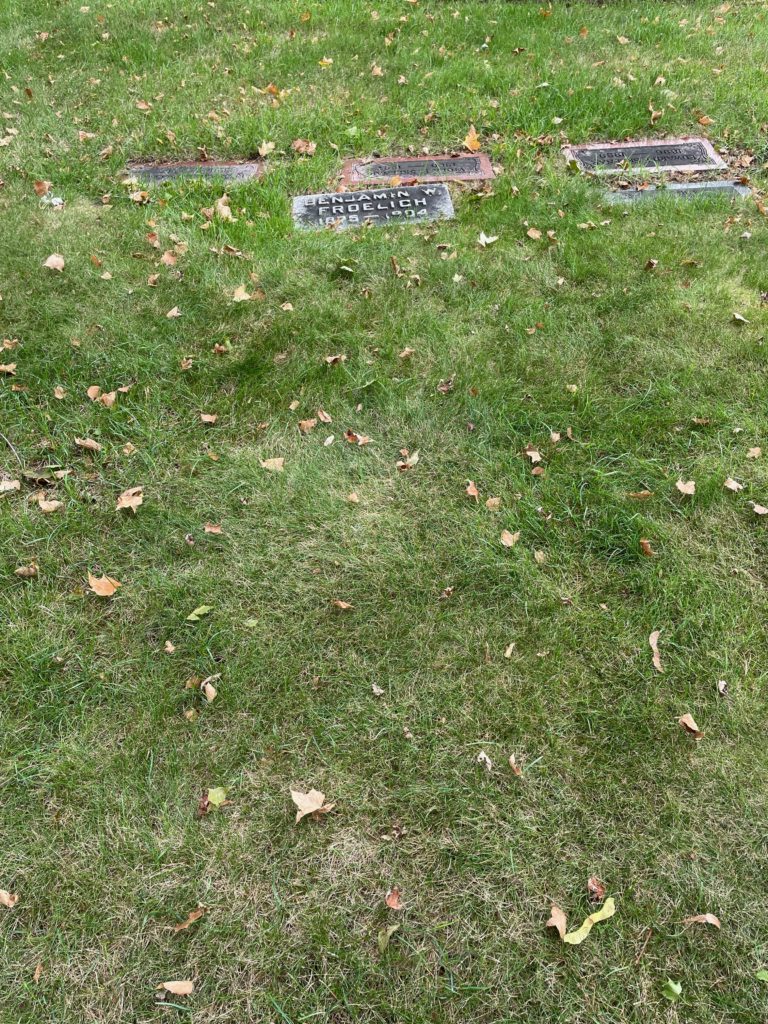Erik Visits an American Grave, Part 1,067
This is the unmarked grave of John Froelich.

Born in 1849 in the town of Froelich, Iowa, which was named after his family obviously, Froelich was a tinkerer of that classic 19th century type. He attended the College of Iowa and then went into his tinkering ways.
By the late 19th century, with the possibility of creating gasoline-powered engines now in the science, Froelich wanted to play with this idea. Specifically, he wanted to create more efficient farm machinery. Froelich read up on a lot of this stuff and he was fascinated with the idea. Plus he had some family money. So he could play around if he wanted. He was a farmer and was dragging huge numbers of men and horses through the fields every year to harvest his grain. There was a steam-powered thresher by the 1890s. But it was not only a huge machine, it was dangerous. It sparked and those sparks could set a field on fire and destroy a farmer’s crops. So that wasn’t so good. He had a blacksmith named Will Mann and they put themselves to work on a tractor that could go both forward and backward using gasoline, which up to this point was a byproduct of the oil industry that was usually just burned off in those tremendously polluting times. Together, they completed the prototype for this project in 1892. They were able to get someone to try this, out in South Dakota. So they loaded the thing on a train and took it out there. They then hooked it up to a threshing machine and were able to process 72,000 bushels of grain in 52 days. That was considered quite successful. This was a huge advance in the world of gas-powered engines.
Froelich then got some investors and in 1894, started the Waterloo Gasoline Traction Engine Company. They built and sold four gas-powered tractors, but the farmers, unsure about change, soon returned two of them. The company soon branched out to other engines. Again, like what was common with these tinkerer types, Froelich wasn’t particularly interested in just developing more engines. He saw a problem he thought he could fix and so he put his mind to that and then switched to something else. He also really was more interested in farming than he was in engines. So he left his own company in 1895, not making any real money on his invention. Eventually, John Deere bought the company out in 1918.
One of Froelich’s later projects was building a more effective washing machine. By this time, he had moved to Minnesota. The Froelich Neostyle Washer became a popular version of this new machine. But most of his interest was in gasoline-powered engines and other things concerning cars. He kept filing patents until at least 1923, when he filed one for a new vehicle steering gear. In fact, quite a few of his patents revolved around this sort of issue, such as a 1917 patent on reverse clutches and gears and a 1915 patent for something called a “gear wheel.”
Froelich died in 1933, at the age of 83.
John Froelich is buried in Roselawn Cemetery, Roseville, Minnesota.
If you would like this series to visit more agricultural innovators, you can donate to cover the required expenses here. John Deere is in Moline, Illinois and Benjamin Holt is in Stockton, California. Previous posts in this series are archived here.


